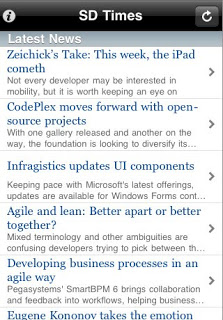 It’s almost time to unveil the SD Times 100 – the top 100 companies, project and movements that are demonstrating innovation and leadership in the software development industry.
It’s almost time to unveil the SD Times 100 – the top 100 companies, project and movements that are demonstrating innovation and leadership in the software development industry.
This year, the SD Times 100 will be “officially” published in the June 1, 2010, issue of SD Times. It’ll also appear on that date on sdtimes.com.
However, continuing a new tradition begun last year, we will tweet out the SD Times 100, category by category, on Monday, May 31, starting around 11:00am Eastern, 8:00am Pacific. We’ll begin with the “Agile & Collaboration” category, and will tweet another category every 30 minutes or so, continuing through all 12 categories until we reach the biggest one: Influencers.
See all the action by following us on Twitter: www.twitter.com/sdtimes.
What is the SD Times 100? As we wrote in the debut 2003 awards:
The editors of SD Times identified the industry’s top leaders, innovators and influencers, and broke them out into 10 separate industry segments. Some companies lead in one category, others in more than one. In each category, one company has been spotlighted as a star deserving of special notice.
When choosing the SD Times 100, we carefully considered each company’s offerings and reputation. We also listened for the “buzz”—how much attention and conversation we’ve heard around the company and its products and technologies—as a sign of leadership within the industry.
The SD Times 100 looked for companies that have determined a direction that developers followed. Did the company set the industry agenda? Did its products and services advance the software development art? Were its competitors nervously tracking its moves? Were programmers anxiously awaiting its developments? Those qualities mark a leader.
Subjective? Of course. But leadership and innovation can’t be measured by stock valuations or analyst reports. The SD Times 100 represents what we believe to be the best of the best….
While you’re waiting for the 2010 SD Times 100 to tweet out next Monday, please feel free to peruse the debut 2003 awards and last year’s 2009 awards.
See you on Twitter!



